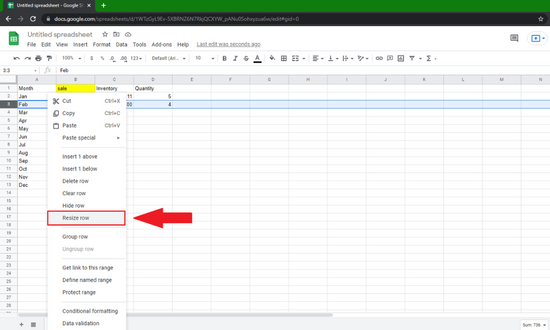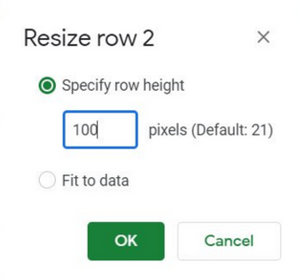Do you have a bunch of query results in Google Sheets and want to see them better? Or you simply have very small text, so it's hard to read? I had this problem, and figured out how to make cells bigger in Google Sheets. Here's my solution.

In recent years, Google has been developing tools that cater to document creation while connected online. One such program is the Google Sheets. It is an application used to create spreadsheets similar to Microsoft Excel.
When it comes to navigating Google sheets, one of the most frequently asked questions is "how to make cells look bigger," so we will address that in this article.
How to Resize Cells?
If you have enough experience with Microsoft Excel, then Google Sheets will be easy for you. Cell adjustments are one of the most common resolvable issues but often neglected. It is effortless to do so, but as entries become so many, laziness can creep in.
There can be a few ways on how to adjust the size of the cell. For this discussion, let us assume that you use a PC and have a Google account or at least a Gmail account so that you can access the Google Sheets tool. Here are the following ways for cell resizing:
Uniform adjustment of cells in a row
- Select a row by clicking on a particular row number in which you want to resize. Multiple consecutive rows can be selected by holding down the 'Shift' key while selecting the last row of choice. For multiple non-consecutive rows, hold the 'Ctrl' key while clicking the rows of choice.
- After selecting, hover the mouse pointer on the selected rows and perform a right-click. Choose then the option 'Resize row.’

- Below the 'Specify row height,' if you are not familiar with the dimensions, you can perform a trial-and-error method. If you want the rows to automatically contain the size of the largest entry among the selected cells, select 'Fit to data.' If satisfied, click 'OK.' If not, you can repeat it by right-clicking again. For reference, the default height of the row is 21.

Uniform adjustment of cells in a column
- Select a column by clicking on a particular column letter in which you want to resize. Multiple consecutive columns can be selected by holding down the 'Shift' key while selecting the last column of choice. For multiple non-consecutive columns, hold the 'Ctrl' key while clicking the columns of choice.
- After selecting, hover the mouse pointer on the selected columns and perform a right-click. Choose then the option 'Resize column.'
- Adjusting the column size uniformly is the same as changing the row sizes. You can also perform a trial-and-error method or automate it by selecting 'Fit to data.'
Manual adjustment of cells
Adjustment of either row or column of cells can be made manually by dragging the borders of row number of the column letter and adjust the size of the rectangle dimensions. However, it can be done for just a single row or column only. If you want to recreate the size adjustments, you can perform the 'Copy-Paste' method, but that is for the new entries only.
Merging of cells
Another way of making the cells look larger is to merge a group of cells into one large cell. You can merge cells in a row or a column or even in a cluster. You can highlight the cells of choice and choose 'Merge' from the toolbars above.
Summary: Make cells bigger in Google Sheets
- Select the cells you want to enlarge.
- Click the Format toolbar button.
- Select the Size option in the dropdown menu.
- Select the size that you want.
Conclusion
Cell adjustments can be easy. If you are adjusting while there are already entries being encoded, choose the 'uniform' method. If you are just about to start, you can manually perform the adjustments, but this hinders your capability to adjust midway. Merging cells is a handy function and can even bring aesthetics to the document.